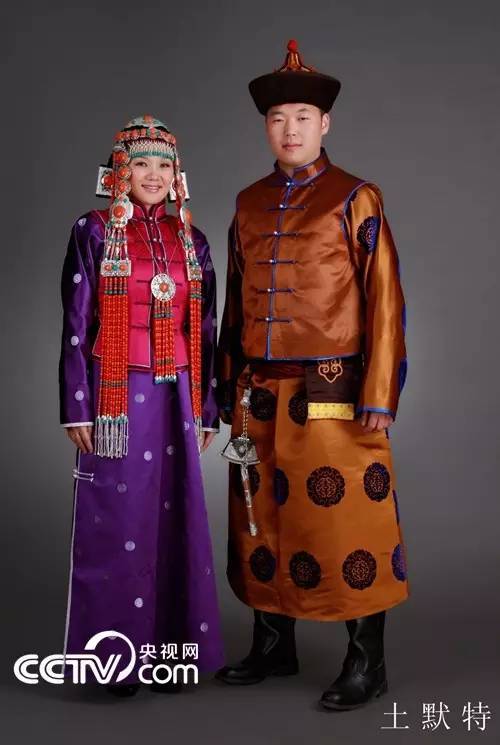Tmud


Origin of the Tribe
With its name meaning “ten thousand” in Mongolian, the Tmud tribe originates from Tumad, an ancient people who have lived in the forest to the west of Lake Baikal since before the 13th century. In the 15th century the tribe settled in the Yinshan area. In the Qing Dynasty (1644-1911), the government reorganized it into two groups, the predecessors of today’s Tumd Left Banner and Tumd Right Banner.
Features of the Clothing
Black color is taboo to Tmud dress. Men’s robes are mostly in deep colors, such as blue, dark blue or brown. Their long and broad waistbands are often made of orange or blue silk and satin, matched with steel Mongolian knives and pouches. Round tops or four-lobed flat-top hats are often worn in winter while round hats or top hats are donned in spring and summer.
Dressing Customs
Women’s robes (Mongolian: deel) are often in red, green or cyan, matched with pink and green girdles. There are two typical kinds of female hats: embroidered hats with standing brims and round hats with red tassels, both of them sewed with two long embroidered ribbons at the back. Compared with married women, maidens’ clothing is in a simple and elegant style as they do not wear many ornaments in daily life, sporting only braids and embroidered cloth boots. On the other hand, married women do not wear waistbands but on special occasions don long waistcoats (Mongolian: uuji) with slits on the back, left and right sides (often in blue and dark green). They also show a strong preference for beautiful headdresses, rings and bracelets.




